Asymmetrical Crawling in Babies: Should You Be Concerned?
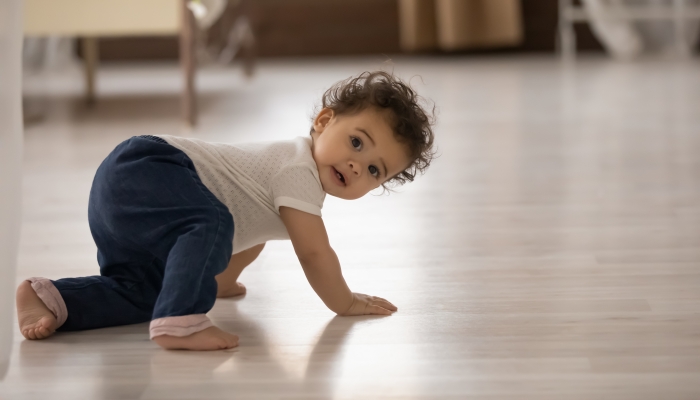
- Not all asymmetrical or non-typical crawling styles are cause for concern.
- Long term asymmetrical crawling can lead to pelvis, muscle, and joint issues.
- Babies with autism spectrum disorders, cerebral palsy, and vision issues may crawl asymmetrically.
- Babies that switch from normal to non-typical crawling often are just improving their motor skills.
- Your pediatrician or family doctor can discuss crawling behaviors with you if you are concerned.
As your baby starts to become more active and learn how to scoot and crawl, your life will quickly become much more hectic. Their curiosity and increased mobility will keep you on your toes to be sure your little one doesn’t get into anything dangerous.
Eventually, you may notice your baby is crawling in an unusual way. This could include scooting, only using one leg for mobility, or other non-typical crawling movements. Since all babies develop at different speeds, not all asymmetrical crawling positions should cause concern.
It may simply be your baby exercising different muscles and their own preferences as they improve their developing motor skills. However, there are also potential concerns that a child crawling asymmetrically could be an early sign of autism or cerebral palsy, and can eventually lead to improper bone, muscle, and joint development.
Let’s take a closer look at asymmetrical crawling in babies and when you should contact a pediatrician or pediatric orthopedic doctor for more advice.
Is Asymmetrical Crawling Normal?

Every baby will develop at a different rate, and will learn how to crawl in their own unique way. Babies that are encouraged to crawl from an early age will not have a higher occurrence of non-typical crawling than babies that are not encouraged.
An asymmetrical crawling pattern may not be considered normal, but might not always be cause for concern either. However, in order for your baby to have their muscles, joints, and bones develop properly, you will want to encourage them to crawl in the typical and balanced fashion.
It’s not unusual for parents to wonder about the different ways to correct asymmetrical crawling. After all, long term asymmetrical crawling can lead to a few different physical developmental issues including:
- Improper muscle development.
- Curved spine or scoliosis.
- Shifted pelvis and hip girdle.
- Visual orientation issues.
- Issues with body awareness and balance when learning to walk.
When babies crawl asymmetrically without being corrected, it could have long term effects on their physical development. The biggest concern is improper development of muscles on both sides of the body, which could lead to your baby being unaware of their proper midline. This can lead to issues with future skills like standing and walking.
What Causes Asymmetrical Crawling?
There are a variety of reasons a baby may start to crawl in a non-typical manner. Asymmetrical crawling could be a temporary action that a baby will self-correct over time as they become stronger and more sure of their motor skills.
But if a baby does not self-correct their asymmetrical crawling, it could be due to a few reasons including:
- Poor muscle tone on one side of the body
- Developmental delays; either physical or mental
- Improper alignment of pelvis, hip girdle, or joints
- Vision issues leading the baby to tilt to one side
Certain clothing garments can help encourage babies to crawl properly. If their knees are sore from thumping around on the floor, the discomfort can lead to asymmetrical crawling to ease comfort. By placing your baby in crawling pants, their knees are padded to offer a much more comfortable way to improve their motor skills.
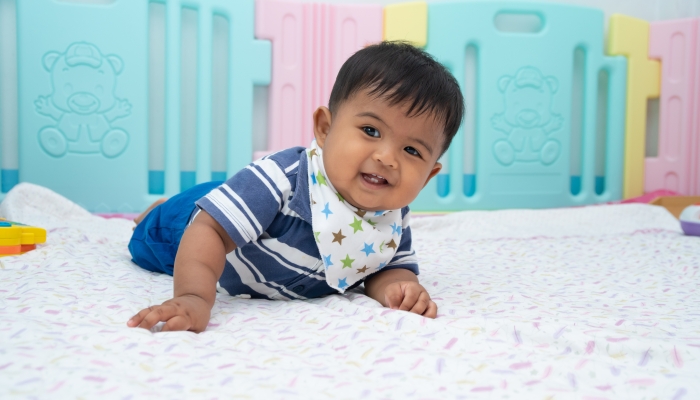
What Kinds of Asymmetrical Crawling are There?
The term asymmetrical crawling is basically any type of baby crawl that is not fully uniform with the two hands and two knees on the floor equally. However, since crawling can differ from baby to baby and may not always be a cause for concern, crawling milestones are rarely included on development charts.
There are a number of different crawling patterns that may fall into the asymmetrical or abnormal category. These can include:
- Club Crawling: Also called one-legged crawling, this style of movement involves the baby crawling with one leg tucked in, while the other does all the work.
- Hitch Crawling: Instead of keeping their knees under their hips, a baby will instead hitch a leg out to the side for propulsion leading to an imbalanced pelvis.
- Bear Walking: Babies that walk on their hands and feet, instead of their knees. Their knees will be kept straight and their bottom will be sticking up in the air.
- Crab Walking: Similar to bear crawling or normal crawling, only a baby will go sideways or backwards using their arms as the source of propulsion.
- Belly Crawl: Also known as the military style or commando crawl, babies will crawl forward but will drag their belly or flop down with each little distance forward.
- Bottom Scoot: Instead of a proper crawl, a baby will instead scoot around on their bottom using their arms or legs for propulsion forward or backward.
- Bunny Hop Crawling: Rather than having a reciprocal movement where the legs move opposite from each other, a baby will hop both legs forward at the same time.
- Frog Leg Crawling: Babies crawl with their knees far apart rather than aligned with the hip joints. There is little core support and crawling can be difficult.
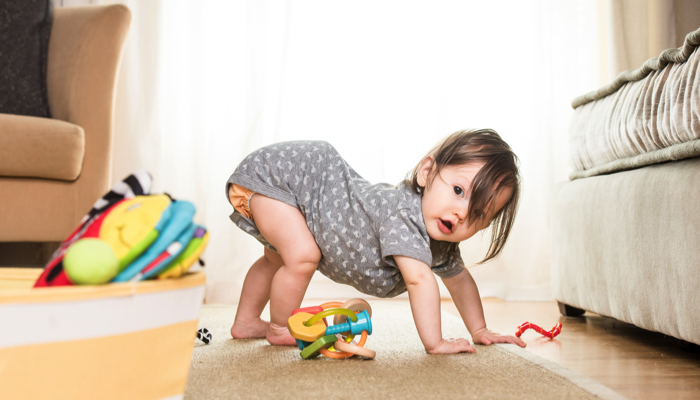
While all of the above baby crawling types are considered asymmetrical, or non-typical, not all of them will cause problems. However, a baby that continues to crawl in this way over a longer period of time can develop muscle and skeletal issues. In addition, further motor skills can be affected such as balance, walking, and running.
Should I Try to Fix My Baby’s Asymmetrical Crawling? If So, How?
In some cases, a baby will be able to self-correct their own crawling patterns as they become more confident in their motor skills and their muscles become stronger. You can encourage your baby to start crawling properly by adjusting their arms and legs in the right way and helping them move around.
If their abnormal crawling is due to a lack of confidence or muscle tone, your physical support and encouragement can give your baby the confidence he or she needs to attempt to crawl in a proper and well balanced manner.
However, if your baby continues to crawl in an asymmetrical way, it might be a good time to see if there are any underlying issues causing the problem. Contact your family pediatrician or a pediatric orthopedic doctor.
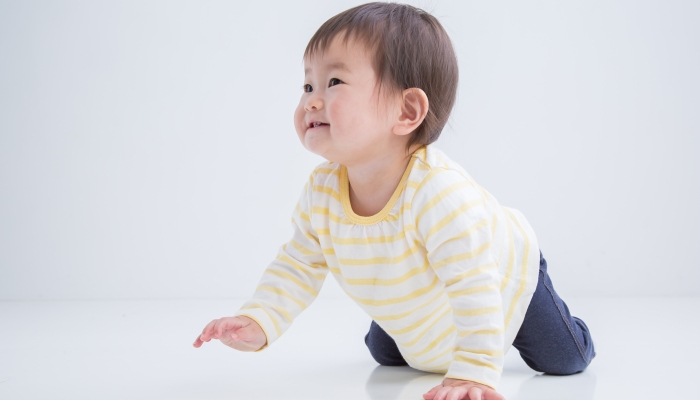
When to Talk to a Doctor About Asymmetrical Crawling
If you are concerned that your baby’s non-typical crawling behavior could be the sign of something else, don’t hesitate to contact your doctor and explain your concerns. Autistic children may crawl in an asymmetrical manner and show a range of other developmental impairments.
Cerebral palsy can also be another cause of improper crawling habits, especially if the baby refuses or seems unable to keep both hands and both knees on the floor at the same time. Additionally, vision issues, hip dysplasia, pelvis issues, and joint issues can be potential reasons for abnormal crawling behaviors.
All of these issues can be discussed with your family doctor or pediatrician. Don’t be afraid to take videos of your baby crawling as well since this can help your doctor form an educated opinion of the cause and what solutions are available.
FAQs
Is asymmetrical crawling linked to autism?
Asymmetrical crawling alone is not a sign of autism. However, children who are later diagnosed with ASD have sometimes been known to crawl asymmetrically as babies. In particular, gross motor delays and abnormal movements in infants have been linked to later autism diagnoses. If you are concerned that your baby may be showing signs of autism, it’s highly recommended that you look for other signs besides non-typical motor skills.
Is asymmetrical crawling linked to cerebral palsy?
Cerebral palsy can present itself in many ways, but since it does affect mobility so much, asymmetrical crawling in babies could be a sign. Lopsided or “crab crawling” could be typical crawling styles in babies with cerebral palsy.
Is asymmetrical crawling linked to visual impairment?
Babies that have visual impairments may crawl asymmetrically. If a baby has difficulty seeing certain things, or has an issue moving their eyes to look up or around them, they may crawl in the “hitch” style in an attempt to improve their angle of vision.
Why is my baby crawling with one leg tucked in?
This is normally called “club crawling” and is common in babies that have poor or imbalanced muscle tone, or a misalignment with their pelvis or hip muscles. Some babies may also hitch crawl on occasion but will switch back to normal crawling as well.
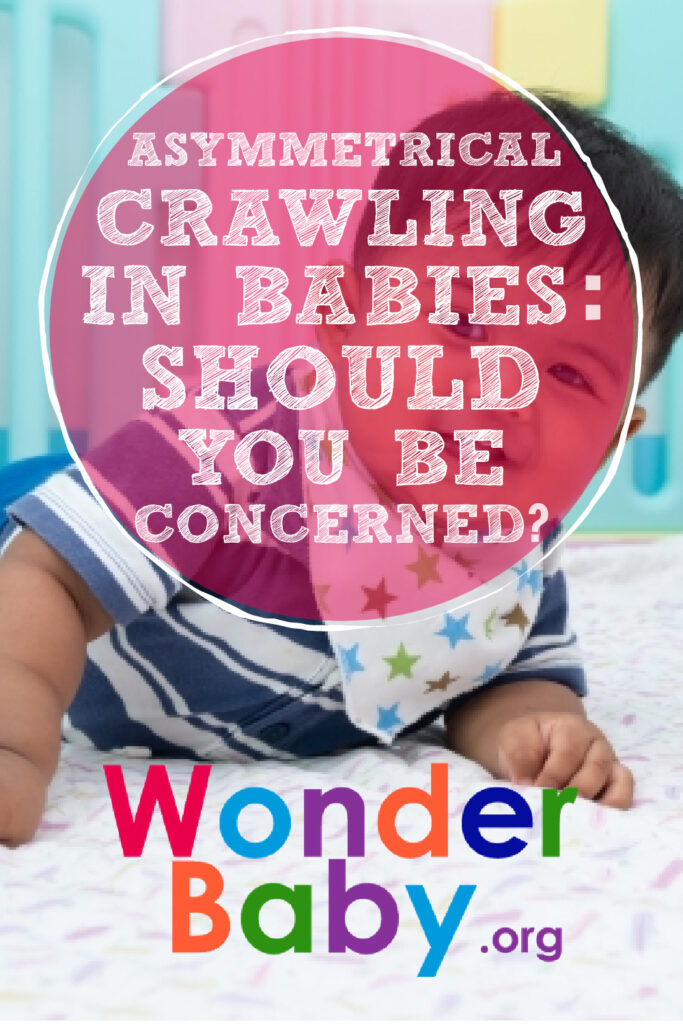
The information WonderBaby provides is not intended to be, and does not constitute, medical or other health advice or diagnosis and should not be used as such. Always consult with a qualified medical professional about your specific circumstances.
Related Posts
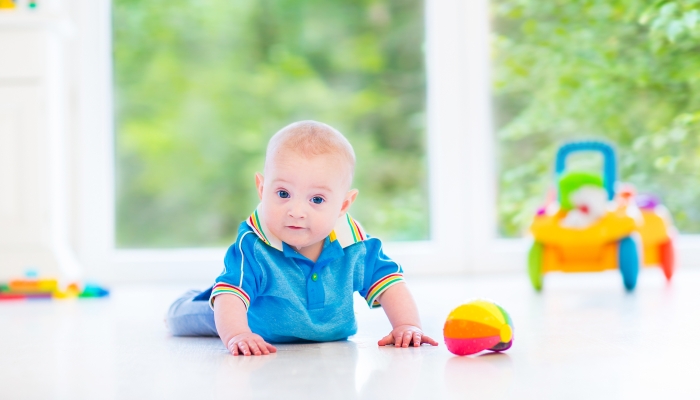
Crawling
Baby Hates Tummy Time? Try These Alternatives Instead!
If your baby hates tummy time, there’s hope! These 5 alternatives will keep your baby smiling while on their belly.
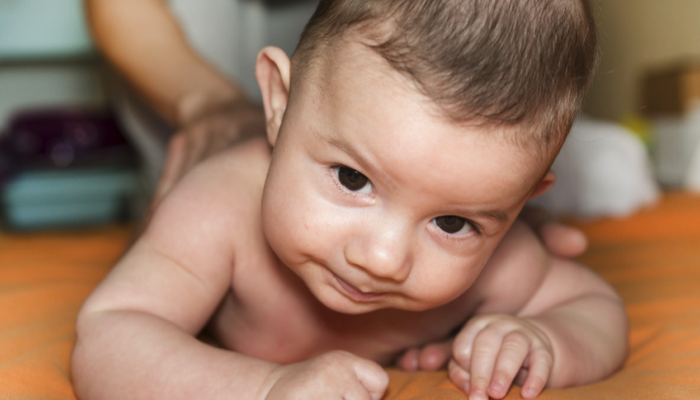
Crawling, Visual Impairment
When does a blind baby start crawling?
When does a blind baby usually start to crawl? When should I start to be worried that there is another issue besides blindness?
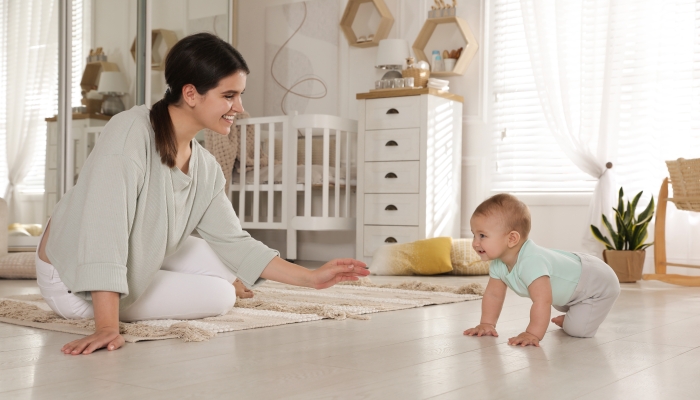
Crawling
Stages of Crawling: When and How They Happen
Your baby will learn to crawl in their own way and at their own pace. The crawling style your little one chooses will also influence when they start moving.